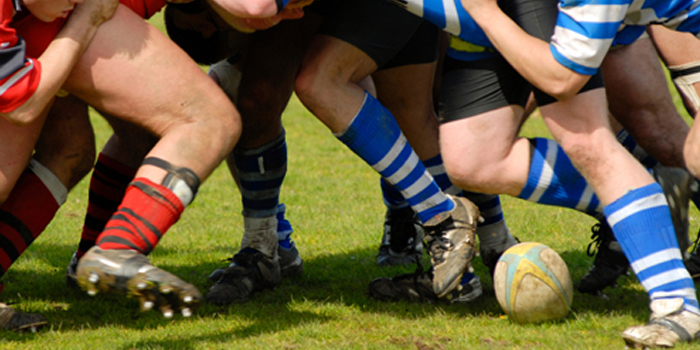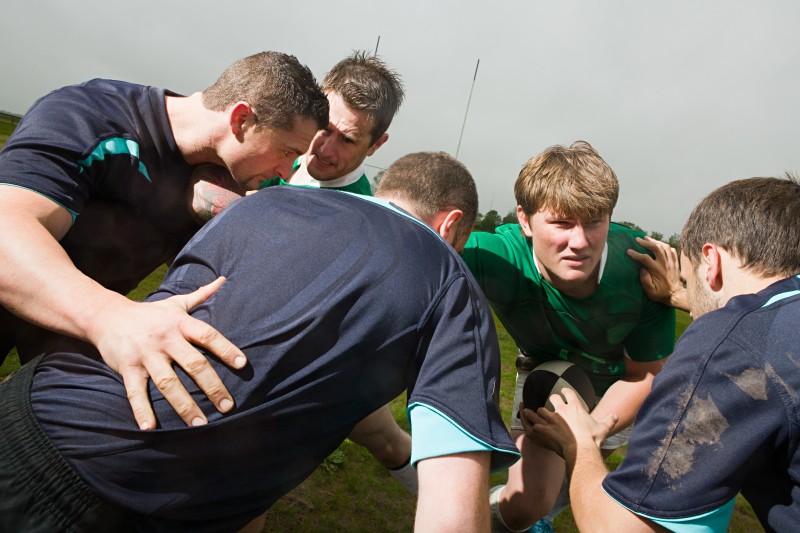
As a strength and conditioning coach, my primary role is to minimize the risk of injury. My secondary role is to improve the physical performance of the individual and team I am working with. So my question is, are we justified in making the above statement if what we are doing is not achieving those goals?
I see it time and time across programs where single-leg work is left as a possible afterthought in the programming and not prioritized as a key element of the lower body program. Sure, the squat is king, but when you have beaten up players, the squat as the key lower body strength movement needs to be re-assessed. As with all of the powerlifts and Olympic lifts that are mainstays of a number of programs, we need to ask ourselves the question, "Why do single-plane movements predominate in programming for the contact sports?"
RELATED: Extending The 30's Method for Strength and Size
Even if the preferential biases of the strength and conditioning coach lend in the direction of these lifts (whether by co-incidence or design), and whether they have invaded the program or form a portion of the program, consideration needs to be given to the plethora of other movements available. A player once told me that after his first year in professional rugby, he could not remember the last time that he was 100% ready to take the field of play. To him, 80% was his new 100%, and his programming needed to reflect this. Just how much gym time do we need to make him a productive player on game day and to keep him healthy?
Now, by no means am I saying we need to eliminate a major portion of gym training. It is just the fact that sports are multi-planar in nature. You would not condition a team sport athlete by just doing straight line running; at least I hope you would not. So why do we allow the same mentality to pervade the weight training programs of the same group of athletes?
Seeing a player perform four sets of four reps at 220 kilograms on the SS Yoke Bar in the morning, and then watching him barely able to move around the field in a running session in the afternoon, tells me we need to re-think the efficacy of this programming.
Would not a single-leg sprinter’s squat (Bulgarian) be more appropriate for the already-strong athlete to allow transfer to occur to a running sport? This, combined with lateral bench blasts as a plyometric contrast, would be a much more appropriate use of training time.
The younger the athlete, the more time should be spent not only on fundamental movement skills but also on developing the size and strength needed to play the sport. As a player moves through the age group ranks, the more the focus needs to shift from less general to more specific movements to ensure complete development and transfer to the playing field.
In a previous article of mine, I discussed if there were such exercises as sports-specific movements. Many of you commented your preferred movements, but in reflection since that article, the movements needs to be clarified as to what they allow a player to do in the sport of choice. As Bodarchuk’s work on transfer of training notes (Transfer of Training in Sports Vol. II, Anatoly Bondarchuk, p 27-28):
“This usually refers to whether the transfer tends to be or is moving in a manner more positive, negative or indifferent. In other words, by doing a particular type of training the transfer becomes more positive, negative, or neutral.”
Certainly strength can make up for some technical issues, especially when a player finds himself in a less-than-desired position and can move into a sounder technical position by exerting strength. But for the most part, strength levels past a certain point are redundant and specifics need to be implemented. This is where the art of experiential training takes over from the science of strength and conditioning. A number of exercises borrowed from track and field sports have found their way into many programs. Many from Franz Bosch have been used in very innovative ways by rugby strength and conditioning coaches to get extra transferability into their programming.
A change of focus is needed: a shift away from the apparent volume and intensity of how much training a player can tolerate, to a more player-specific approach of how much training a player needs to be able to play the chosen sport well and minimize the risk of injury. After all, the ability to train is dictated by a person’s ability to recover. I am not preaching the HIT line of a one set to failure, but I know that within my own programming it is time to undertake a serious review and to look at how to make the entire training process better for the individual in order to achieve the prime focus of making more injury-resistant, better rugby players.
Now, I certainly do not have all the answers, but this idea is not new. From Vern Gambetta's saying, “Train movements, not muscles”, to Mike Boyle’s "functional, purposeful movement" approach, we need to look at what our athletes actually need, and be strong enough not to follow the crowd if we disagree with a particular type of training.
Here is my strength training philosophy, as Bruce Lee once said: “Keep what is useful, throw away what is not."
- Exercise choice should be most bang-for-buck (free weight, compound movements) and programmed according to the individual's strengths and weaknesses.
- Training time should be less than an hour, with appropriate rest periods and sufficient volume; this should be more than easily accomplished.
- A strong foundation of strength should be built before trying to accomplish speed and power. Strength underpins all other physical components in the gym.
- Unilateral movements should be included in any good program to identify and help correct weaknesses.
- Focus on the muscles you cannot see (pulling movements for both upper body and lower body). This also includes the highly neglected rotator cuff exercises and rotational movements.
- Prioritize weaknesses but maintain strengths; do not neglect your strong points in order to improve your weak ones.
- Use different loading protocols for different movements for different individuals (any program should be adjusted for the individual, not the other way around).
- Technique should ALWAYS dictate the load used, not the opposite.
- Change the core movements and assistance exercises every three to four weeks to attain the best adaptions from the neural system. Change angles and use different kettlebells, bands, and bars.
- Anything you do in the gym must crossover into your chosen sport/activity. Be specific with exercise selection and loading protocols.












As usual you have broken down the elements of strength training and questioned current trends of thinking and as you usually do you put it in simple terms and kept it simple.
Always enjoy reading your articles, nice work